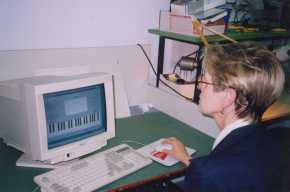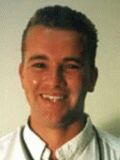| The cochlear implant ('bionic ear') converts
sound into electrical pulses which are injected directly
into the auditory nerves. It works well for speech, but
less well for music. In collaboration with Cochlear
Ltd, we are conducting research and development of
coding strategies for auditory information to be used
in cochlear implants to improve the appreciation of music
by users. Such improvements should also lead to improvements
in the perception of tonal languages.
The first part of this study was to make a 'map' relating
the electrical variables on the signals input to the
electrodes to the musical perceptions of the user. This
was the first part of the doctoral research project
of Robert
Fearn and is reported in
and in a technical article: Fearn, R., Carter, P. and Wolfe, J. (1999) 'The perception of pitch by users of cochlear implants: possible significance for rate and place theories of pitch', Acoustics Australia, 27 (2) 41-43 .
Robert Fearn's thesis is now available in pdf format
(3.3 Mbyte):
Our collaboration with Cochlear led to the development
of a new processing strategy called Multirate,
which is described by the patent:
- Wolfe, J., Carter, P., Parker, S., Fearn, R., and
Frampton, N. (2001) Multirate cochlear stimulation
strategy and apparatus. (International publication
date: 18/1/2001; priority date: 13/7/1999). Australia
(App'n No 56652/00), Canada (TBA), Japan (TBA), US
(TBA) and Europe (Appn No 00941808.8)
Robert implemented the multirate strategy with two different
sets of parameter compromises, called Voc-L
and Instrument-L (and collectively Music-L).
Essentially they assign different importance to the frequency
information needed for speech and for music.
Multirate currently only runs on a developmental hardware
platform that was developed by the Bionic Ear Institute
and the Cooperative Research Centre for Cochlear Implant
and Hearing Innovation in Melbourne.
|
 CI subject performing automated pitch
perception experiment
CI subject performing automated pitch
perception experiment

Robert Fearn won the silver medal in the international
Young
Inventors Award for his work on this project.
(See the story
in the Far Eastern Economic Review.)
|

